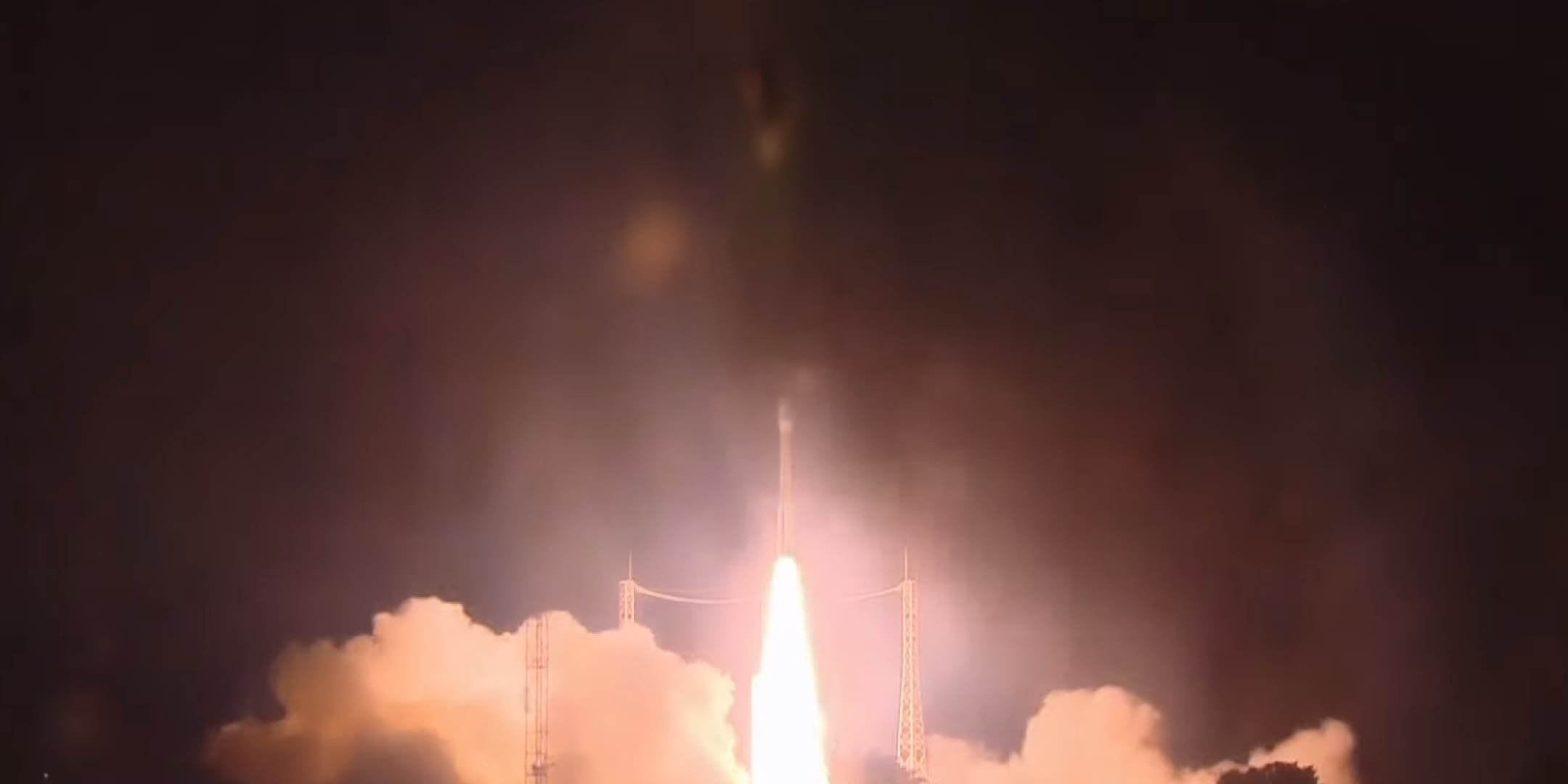During the night of Wednesday 2 to Thursday 3 September, Vega accomplished a flawless launch from Europe’s spaceport at the Guiana Space Centre (CSG), orbiting 53 satellites for 21 customers on the proof-of-concept flight of the new Small Spacecraft Mission Service (SSMS). The launch was the fourth this year from the CSG and the 16th flight for Vega since entering service at the launch base in 2012.
The SSMS project was proposed by Arianespace and developed with support from the European Space Agency (ESA) and Avio. It is designed to launch multiple small satellites from 1 to 500 kg to share launch costs between customers. The satellite dispenser was developed by Avio under ESA leadership and built by Czech company SAB Aerospace. Satellite integration was performed for the first time in Europe and the European Union contributed funding to this proof-of-concept flight.
The SSMS dispenser is composed of different modular components that can be assembled as needed in building-block style:
- An upper portion with a central column, tower or hexagon, and a supporting platform, adjustable rods and dividers ;
- A lower portion, also using a hexagon-shaped module (Hexamodule), accommodating several cubesat deployers.
On this flight, Vega was carrying seven microsatellites (from 15 to 150 kg) on the upper portion and 46 smaller cubesats on the lower portion’s Hexamodule for 21 customers from 13 countries, including OSM-1 CICERO, making history as the first ever satellite launched for the Principality of Monaco. The lift-off mass was 756 kg and the satellites were placed into two Sun-synchronous orbits.
After the launch, https://fscience-old.originis.fr/wp-content/uploads/2023/06/GLOC_Oslo_Norway_S2_27juillet2022_web-2-1.jpg President Jean-Yves Le Gall said: “This 16th perfect launch for Vega confirms once again the excellence, availability and performance of the Guiana Space Centre, Europe’s spaceport. I am delighted that the 21 customers with satellites on this flight chose to place their faith in us. I would also like to congratulate all of the teams at ESA, Avio, Arianespace and across the European space industry, and of course the teams at https://fscience-old.originis.fr/wp-content/uploads/2023/06/GLOC_Oslo_Norway_S2_27juillet2022_web-2-1.jpg, whose technical and operational prowess was once again on show.”








